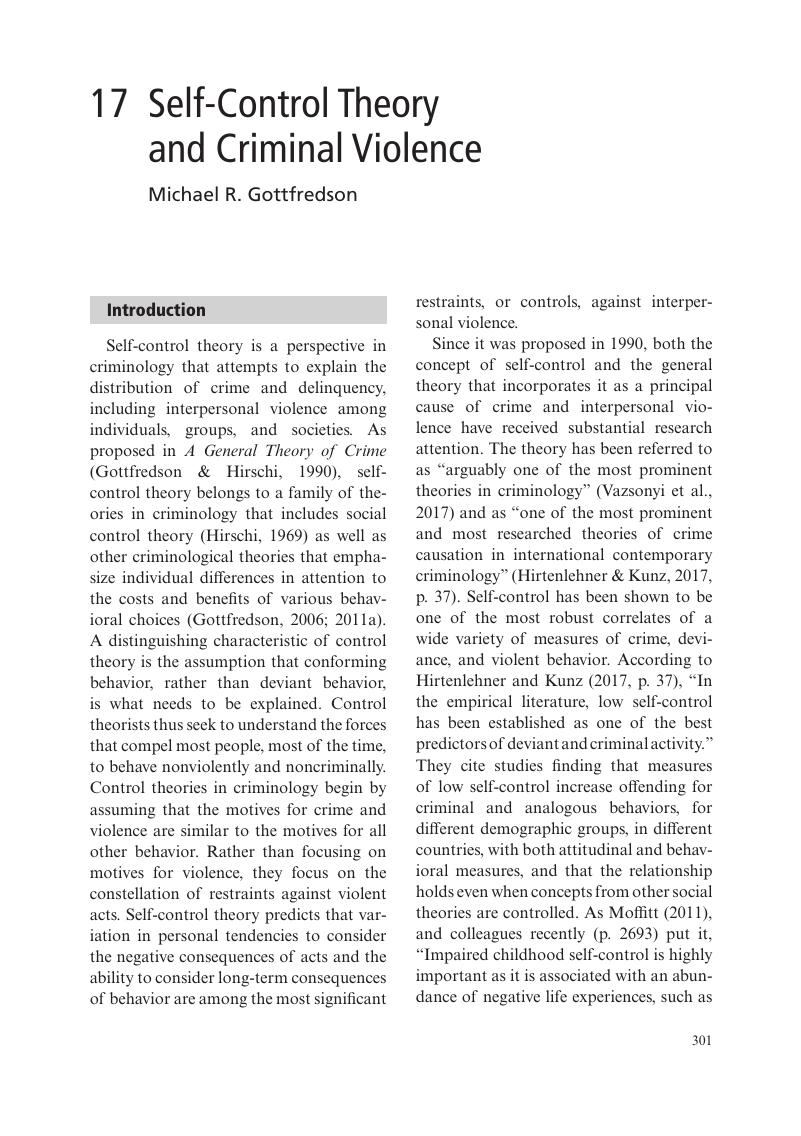Book contents
- The Cambridge Handbook of Violent Behavior and Aggression
- The Cambridge Handbook of Violent Behavior and Aggression
- Copyright page
- Dedication
- Contents
- Contributors
- Introduction: The Cambridge Handbook of Violent Behavior and Aggression
- Part I Introduction and Overview
- Part II Biosocial Foundations of Violence and Aggression
- Part III Individual and Interpersonal Factors for Violence and Aggression
- 14 Applying Empirically Based Trait Models to an Understanding of Personality and Violence
- 15 Social-Cognitive Processes in the Development of Antisocial and Violent Behavior
- 16 Violent Juvenile Offenders: A Psychiatric and Mental Health Perspective
- 17 Self-Control Theory and Criminal Violence
- 18 Peers and Aggression: From Description to Prevention
- 19 Developmental Processes of Resilience and Risk for Aggression and Conduct Problems
- 20 Child Abuse and Neglect
- 21 The Role of Gender in Violent and Aggressive Behaviors
- 22 Lessons Learned: Serial Sex Offenders Identified from Backlogged Sexual Assault Kits (SAKs)
- 23 Research on Social Structure and Cross-National Homicide Rates
- 24 Preventing Violent Crimes by Reducing Wrongful Convictions
- 25 Strain Theory and Violent Behavior
- 26 On Cumulative Childhood Traumatic Exposure and Violence/Aggression: The Implications of Adverse Childhood Experiences (ACE)
- Part IV Contextual Factors for Violence and Aggression
- Part V Looking Toward the Future
- Index
- References
17 - Self-Control Theory and Criminal Violence
from Part III - Individual and Interpersonal Factors for Violence and Aggression
Published online by Cambridge University Press: 30 July 2018
- The Cambridge Handbook of Violent Behavior and Aggression
- The Cambridge Handbook of Violent Behavior and Aggression
- Copyright page
- Dedication
- Contents
- Contributors
- Introduction: The Cambridge Handbook of Violent Behavior and Aggression
- Part I Introduction and Overview
- Part II Biosocial Foundations of Violence and Aggression
- Part III Individual and Interpersonal Factors for Violence and Aggression
- 14 Applying Empirically Based Trait Models to an Understanding of Personality and Violence
- 15 Social-Cognitive Processes in the Development of Antisocial and Violent Behavior
- 16 Violent Juvenile Offenders: A Psychiatric and Mental Health Perspective
- 17 Self-Control Theory and Criminal Violence
- 18 Peers and Aggression: From Description to Prevention
- 19 Developmental Processes of Resilience and Risk for Aggression and Conduct Problems
- 20 Child Abuse and Neglect
- 21 The Role of Gender in Violent and Aggressive Behaviors
- 22 Lessons Learned: Serial Sex Offenders Identified from Backlogged Sexual Assault Kits (SAKs)
- 23 Research on Social Structure and Cross-National Homicide Rates
- 24 Preventing Violent Crimes by Reducing Wrongful Convictions
- 25 Strain Theory and Violent Behavior
- 26 On Cumulative Childhood Traumatic Exposure and Violence/Aggression: The Implications of Adverse Childhood Experiences (ACE)
- Part IV Contextual Factors for Violence and Aggression
- Part V Looking Toward the Future
- Index
- References
Summary

Information
- Type
- Chapter
- Information
- The Cambridge Handbook of Violent Behavior and Aggression , pp. 301 - 323Publisher: Cambridge University PressPrint publication year: 2018
References
Accessibility standard: Unknown
Why this information is here
This section outlines the accessibility features of this content - including support for screen readers, full keyboard navigation and high-contrast display options. This may not be relevant for you.Accessibility Information
- 5
- Cited by
